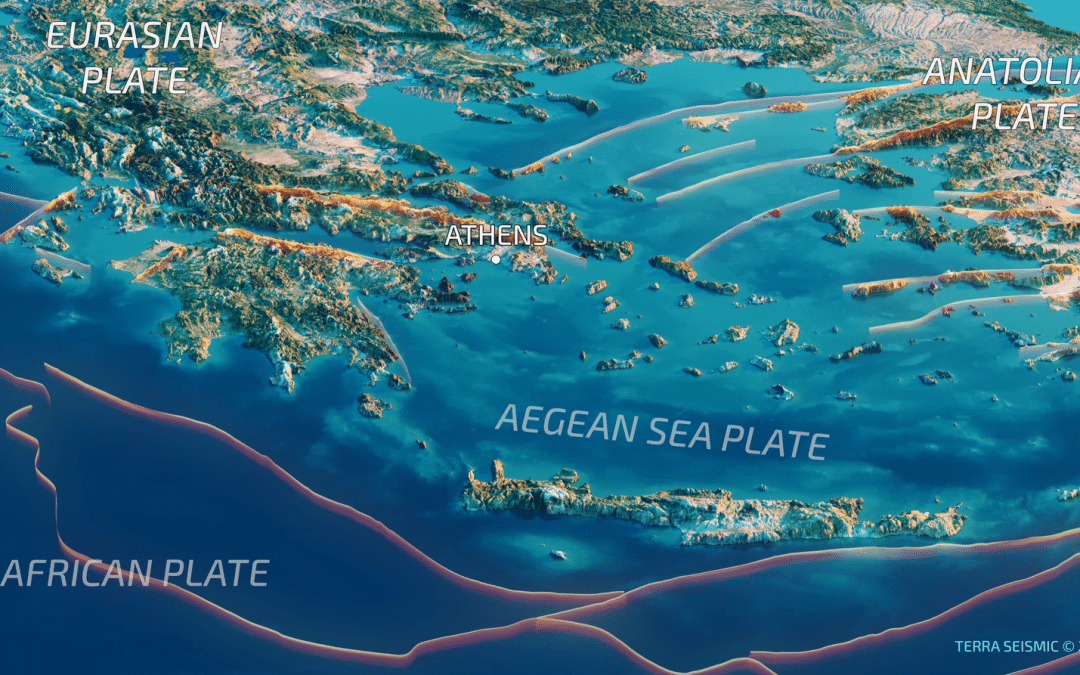Seismicity in Greece is primarily shaped by the complex interactions of the Aegean Sea Plate with surrounding tectonic structures, particularly the Eurasian Plate to the north and the African Plate to the south. This setting makes Greece one of the most seismically active areas in Europe and the Mediterranean. Here are the key factors that define seismicity in Greece:
Subduction of the African Plate: The ongoing subduction of the African Plate beneath the Eurasian Plate, particularly under the Hellenic Arc (the southern part of Greece), is a major source of seismic activity. This process is responsible for deep-focus earthquakes and significant tectonic deformation.
Back-arc Extension: As the African Plate subducts, the overriding Aegean Sea Plate is subjected to extensional forces, causing back-arc spreading. This extension leads to numerous faults and generates shallow, crustal earthquakes throughout the Aegean region.
Complex Fault Systems: Greece features a dense network of active faults, with both strike-slip and normal faulting prevalent due to the tectonic stresses in the region. These faults are responsible for frequent seismic activity, contributing to the high earthquake risk.
Interplate and Intraplate Earthquakes: The seismic activity in Greece includes interplate earthquakes resulting from interactions at plate boundaries and intraplate earthquakes within the plates themselves due to localized stress concentrations and fault movements.
Historical Seismicity: Greece has a long and well-documented history of destructive earthquakes, significantly shaping its cultural and architectural heritage. Historical records and archaeological findings provide valuable data for understanding seismic risks and patterns.
Volcanic Activity: The region’s volcanic activity, notably on islands such as Santorini, is closely linked to tectonic activity and can also contribute to local seismic events.
Seismic Hazard Assessment: Due to its high seismicity, Greece has developed considerable expertise in earthquake engineering, seismic hazard assessment, and urban planning to mitigate the risks associated with earthquakes.
Tsunami Risk: Some of the larger earthquakes in Greece, particularly those in the Aegean Sea, have the potential to generate tsunamis, adding another layer of risk to coastal areas.
These factors make Greece a critical area for studying earthquake science and a place where earthquake preparedness and resilience are crucial components of public safety and infrastructure planning.

